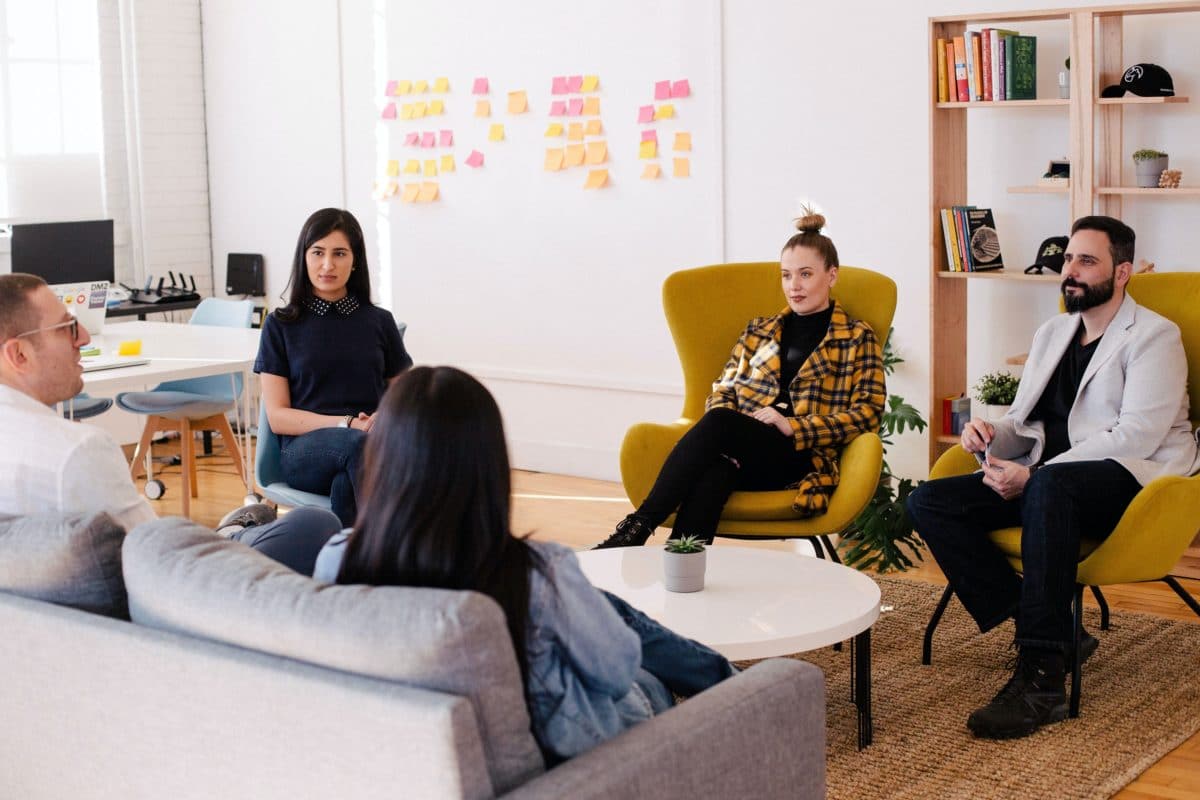At Ironclad, we’re always looking for ways to connect members of our in-house community. We had originally planned our Leadership Roundtable: The Case for Innovation – How Lawyers Can Tap Their Inner Changemaker to be an in-person experience, but we pivoted online due to the COVID-19 pandemic.
In this session, IDEO Design Director Sean Hewens — a former white-collar securities litigator familiar with the ins and outs of life in biglaw — shared practical advice on how lawyers can develop a design systems approach to tackle challenges at their organizations.
Continue reading to learn how you can tap into your inner changemaker.
What is IDEO and what do they know about innovation?
Founded in Palo Alto in 1991, global design and consulting firm IDEO demonstrates deep expertise in the design thinking approach to design innovative products, services, environments and digital experiences.
According to IDEO, truly innovative solutions require a balance of desirability, feasibility and viability. The design process begins with understanding what is desirable from a human point of view, and marries this with what is technologically feasible and economically viable.
IDEO employs multidisciplinary teams to apply an anthropological approach to their research. A key factor driving the success of design thinking is knowing what people say and do is often very different. This means listening and observing is of utmost importance. For example, Sean encouraged smaller samples of qualitative interviews rather than a large-scale questionnaire survey to uncover insights.
Currently, Sean leads the legal innovation practice at IDEO. Walking the fine line between the rules-based world of law and the non-rules based world of innovation, his team has helped firm Hogan Lovells reimagine their associate review process and the Department of Justice attorneys get smarter about using data and data analytics.
Why doesn’t innovation come naturally for lawyers?
IDEO has observed four factors here:
- In-house legal holds an advisor role that discourages experimentation and creativity in favor of having the “right” answer.
- Constant demands place legal team members in reactive roles that can feel disconnected from a larger purpose.
- Limited budgets force in-house legal teams to do more with less, leaving investment in headcount and technology often deferred.
- Legal work often happens in silos due to dispersed teams and the difficulty of integrating with various business units.
To overcome these challenges, apply the design thinking method.
Three-Design Led Approaches for Inspiring Change
In-house legal leaders can start building a change mindset by employing the following approaches.
Approach #1: Get multidisciplinary. Reflect on a challenge you face and consider whom would comprise your ideal team, especially from other departments, so that you assemble diverse perspectives and skill sets.
We invited a couple members of our audience to share their thoughts. Here’s how they put this exercise into action.
VP of Operations and Finance at a nonprofit:
I am the only lawyer on the team and I work with non-lawyers. One of my challenges is that I am often brought in toward the end of drafting a partnership agreement. That means key points like intellectual property (IP) ownership cause problems and slow the process. How can I empower people to negotiate and handle the right things at the right time?
If I were to design an ideal team to tackle this issue, I would include:
-
- Someone who knows how to speak to large audiences of mixed experiences so that everyone is aligned on messaging and SLAs.
- A member of the partnerships team so I can understand the context for the partnership and the usage of assets like IP.
- A designer who can relay the pain points and requirements for executing a creative project so that I can craft the contract with empathy.
VP of Legal at a tech startup:
In my career, I’ve worked in small legal teams where we have de facto operational control. Colleagues from other departments know what they want to do but aren’t sure how legal is focused on the details of execution. Additionally, you might have a deal person who wants to be self-empowered to fast-track their contracts; whereas, you have someone in marketing who wants everything gift-wrapped for them. What ends up happening is that roles, expectations and swim lanes aren’t clear and the process becomes unscalable.
If I were to put together a team to address the issue I face, I would include:
-
- Member of the finance team because I see Legal and Finance as gatekeepers for the business, well-versed in justifying expenditures and understanding the organization’s budget.
- Member from Product or Development so that I can coordinate with someone who understands how to distill high level concepts into action items, tactical milestones and deliverables.
- Legal operations manager to project manage deliverables, timeframes and track overall accountability.
As you can see, by practicing intention and selecting members from outside your team, you can harness diversity in thought and also gather context around the challenge you face.
Approach #2: Harness the power of divergence by holding a brainstorming session. Legal often approaches issues linearly. However, problem solving happens a bit more with push and pull, from divergence to convergence. Go wide by holding no-holds barred session to come up with solutions.
Sean shared IDEO’s seven rules for brainstorming. Of these, our audience — not surprisingly — found #2 the hardest to follow:
- Defer judgment
- Encourage wild ideas (no self-editing)
- Build on the ideas of others
- Stay on topic
- Be visual
- One conversation at a time
- Go for quantity (it’s easier to scale back big ideas than to add to lean ones)
Approach #3: Tell stories. Lawyers tend to over-index on rational arguments. A good story makes you more human and relatable to your audience.
By practicing these three design-led methods, you can start creating change at your organization. Read more in Sean’s article in Bloomberg here.
What’s Next?
Sean closed his presentation by exploring the six trends that may impact how we work in legal over the next 10 years. We’ll explore those trends in Part 2 of our Leadership Roundtable recap.
Ironclad is not a law firm, and this post does not constitute or contain legal advice. To evaluate the accuracy, sufficiency, or reliability of the ideas and guidance reflected here, or the applicability of these materials to your business, you should consult with a licensed attorney. Use of and access to any of the resources contained within Ironclad’s site do not create an attorney-client relationship between the user and Ironclad.





